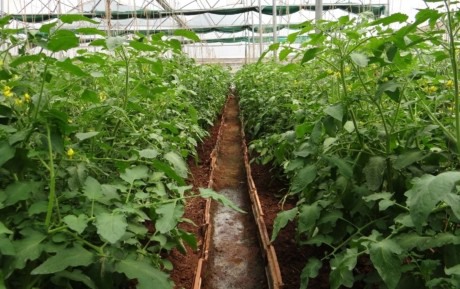A greenhouse has very complex and dynamic climate conditions. The climate in the greenhouse can vary per location and there are differences based on air level and distance to the wall. A wireless sensor network helps with the monitoring of environmental factors such as plant growth, irrigation and vermin, among other things. The connectivity of this network is influenced by environmental conditions and placement and range of the sensors.

Computer models
Within Grow! the senior researcher Rafael Berkvens and PhD student Ritesh Kumar Singh, both associated with the IDLab of the University of Antwerp, are researching the connectivity in the greenhouse. Ritesh: “In order to arrive at good models, the circumstances in the greenhouse first had to be mapped out. Next, the choice of sensors and connectivity mechanism was important to collect reliable data in the long term.”
Reliability
Connectivity depends, among other things, on factors such as interference, sensors and environmental conditions. In the case of the greenhouse, also plants, roof cover, temperature, light and soil surface will influence the signal distribution of the wireless connection. The position of the sensors also plays a role. Particularly striking is that the connectivity in the greenhouse deteriorates as the plants grow.
Own sensors
Because existing communication platforms proved unsuitable, the researchers have developed their own communication platforms. A challenge, since they had numerous factors to take into account, including resistance to water and chemical crop protection agents, suitability for wireless data transfer, connectivity and the right collection frequency. Ritesh: “We have compared our sensors with existing measuring systems in the greenhouse to test the accuracy. The choice for the connectivity protocol was made for LoRa, which can send data at the right frequency, works at long distance and has a low power consumption."
Further optimization
The developed sensors and the connectivity protocol have since been successfully tested in the greenhouse. Presently research is carried out whether this system can be optimized further. The two most important research questions are: How can energy be collected to extend the life of the network? And: can we use energy more efficiently by minimizing the number of data transmissions from the sensors.
The researchers will present the initial results during the Grow MidTerm Event in Den Bosch on January 22. You can read more about this in Dutch here.
Source: HAS Hogeschool
